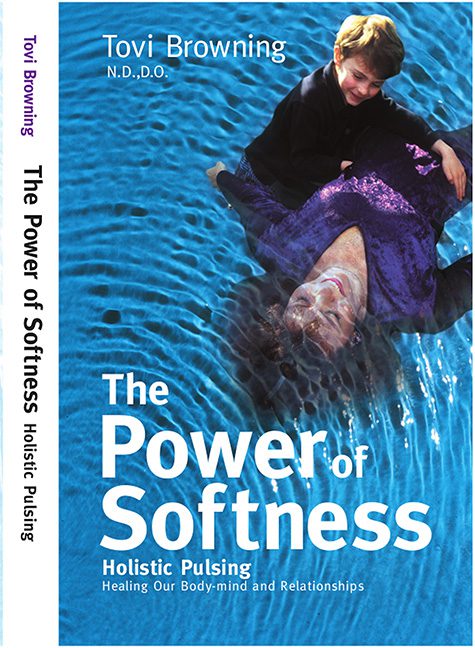
Ah yes, The Power of Softness — nothing says inner healing and body-mind restoration quite like two floating humans possibly drowning in a ripple-textured void of Photoshop despair.
Let’s start with the obvious: the cover promises softness, healing, pulsing, and some good ol’ holistic energy work. Instead, we get a child in stiff black clothes joyfully perched atop a suspiciously lifeless woman in lavender satin, both of whom appear to be submerged in a pool of blue gelatin. The visual? A blend of awkward water birth reenactment and PowerPoint slide from a 1996 alternative therapy convention.
The lighting? Nonexistent. The woman’s face is lit from a completely different source than the child. The shadows refuse to cooperate with each other. The blending of the figures into the water is so clumsy it gives the impression that the child is gently crushing a spirit who’s trying to ascend.
The typography is a journey. The words “Power of Softness” are rendered in huge, heavy sans-serif blocks that feel about as soft as a concrete mattress. And while we love a bold title, there’s a distinct mismatch between the typeface’s rigid utility and the book’s gentle theme. The spine treatment continues the crime spree, offering a vertical line of clunky text that makes the book look like it was designed in Microsoft Publisher with the default font settings left untouched.
The ripple effect behind the figures is meant to be calming, but comes off more like someone dropped a cinder block into a shallow pond filled with glue. The colors bleed, the shadows blur, and the entire cover swims in ambiguity. Are they in water? On water? Hovering? The viewer is left to guess, and not in a good way.
And then there’s the subtitle: “Healing Our Body-mind and Relationships.” It’s almost lost entirely beneath the noise of the ripple effect, floating like an afterthought. Which, ironically, feels like the overall approach to this design—well-intentioned, but executed like a last-minute art project using stock textures and clipart-grade silhouettes.
This cover is not softly whispering wellness and harmony. It is yelling “HELP” from beneath a poorly rendered layer of pixels.
The message may be heartfelt, but the execution is a visual contradiction of everything “holistic” is supposed to embody. It’s not a book you’d pick up in a calm moment of reflection—it’s one you back away from slowly, unsure if it’s therapy or surrealist horror.
No pulse detected. Just one long design flatline.
